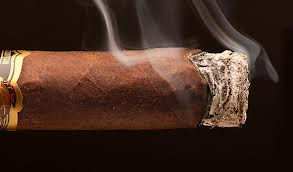Picture yourself in an idyllic humidor, gazing upon a bevy of hard-to-find stogies, trying your damnedest to pick out the perfect burner for the occasion. There are hundreds and hundreds of brands and styles to choose from, varying in color and style from the pristine tan Connecticut-wrapped Robustos, to imposing and oily double and triple Maduros in Churchill lengths that would make even the most seasoned smoker’s head spin. Sure, it’s easy for even the novice smoker to decide what he’d like to smoke, but how easy is it to ensure that the particular stick you’ve chosen is going to provide an even, high quality, comfortable experience?
The first and simplest way to detect a damaged cigar is by sight. Pay particular attention to the wrapper, especially on the end cap. Any tearing or separation from filler is a sure sign of an infuriating smoke in which you’ll be spitting out unruly pieces of leaf while trying to enjoy your burn. Also, keep an eye out for any discoloration or any filmy or moldy residue on the cigar that may indicate poor handling and humidity.
Next, you’ll want to examine the stogie for filler consistencies. To do this, pick up your desired cigar and gently squeeze with your fingertips, up and down the entire stick, feeling for lumps, hard spots, or bends. Many times, this will indicate that your filler is to dense in that particular spot, and that can lead to an uneven burn. If the cigar has no plastic wrapper, try to avoid putting your fingers directly on the end cap while performing this test. If you end up not choosing that cigar, the next customer will need to have his mouth there.
Finally, as you’re smoking your chosen cigar, pay particular attention to the shape of the burning end. If the end begins to “canoe” or become lopsided, quick action could be required to correct it. Remember, heat rises, and turning your cigar so that the slower burning side of the tip is upwards can often remedy this.
We hope these tips help you when choosing your next cigar.

